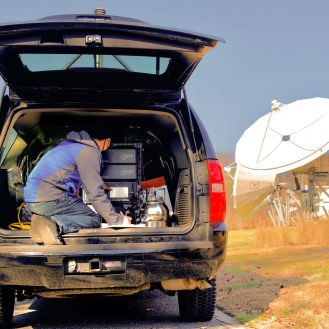The European Union strengthened its environmental policies this week with adoption of a nature restoration law that member countries hope will help them meet climate and biodiversity targets set under the 2015 Paris Agreement and a global biodiversity agreement reached late last year.
The new measures go beyond simply preserving existing species and ecosystems. The law tasks the 27 EU member countries with finding ways to restore large tracts of damaged forests, wetlands and fields, as well as rivers, lakes and oceans, with an overall goal over the next few decades of restoring 30 percent of damaged ecosystems in the EU region, which spans 1.6 million square miles from the Arctic Circle to the Atlantic Ocean and the Mediterranean Sea.
The European Parliament on Wednesday narrowly voted for the nature restoration law with support from traditional center and center-left parties, including Social Democrats and Greens, as well as a few votes from center-right and liberal market-based parties.
Opposition to the law coalesced around the large center-right European People’s Party bloc, which allied itself with far-right and nationalist parties to try and derail the law with a fact-free propaganda campaign that included demonstrably false statements, including claims that the law would force villages to be abandoned and threaten food security.
The debate in the European Parliament the day before the vote prompted some observers to characterize the law’s approval as a sign that science and common sense can prevail against misinformation and populism.
“The science is crystal clear, showing that far too much of Europe’s nature has been degraded or destroyed,” said César Luena, a Spanish member of the European Parliament responsible for shepherding the law through the legislative process. “It’s vital to reverse that trend, and time is running out.”

He said that climate solutions without nature solutions are half measures.
“Let me give you a couple examples, like making soils healthy,” he said. “It’s not good just for farmers, it’s essential for ensuring the soils can store carbon. And carbon-rich soils, in turn, store water and mitigate the consequences of flash storms. Nature is our best ally in fighting climate change, and if we don’t take proper measures to let it thrive, we will be ditching our best chance to achieve climate neutrality.”
Restoring degraded European natural areas would be a big step toward a world where “nature and the economy don’t conflict,” said Jutta Paulus, a member of the Greens/EFA in the European Parliament who led the EU negotiations on the law. “It will help us make nature and the economy work together to serve people without destroying the planet,” she said.
The nature restoration law was introduced by the EU Commission in June 2022 and, as originally proposed, would have required member states to establish recovery plans for 20 percent of the EUs’ land and sea areas by 2030, and for all areas in need of restoration by 2050. It also includes restoration targets for key habitats and species, including reversing the decline of pollinating insects by 2030, given how important they are to food security.
Nature Law Debate Reflects European Culture Wars
European environmental experts said the law is the logical next step in a series of environmental mandates under the EU’s 2019 Green Deal, which aims to plant 3 billion trees, reduce greenhouse gas emissions 55 percent from 1990 levels by 2030 and make Europe climate-neutral by 2050.
The research and peer-reviewed studies that shaped the new nature restoration law make it clear those targets can’t be reached without repairing damaged ecosystems, and without changing the trajectory of the European economy to a direction where it gives back to nature more than it takes,” said EU Commission environmental spokesperson Adalbert Jahnz.
The coalition of conservative European lawmakers opposing the law tried to play on consumer fears of higher food prices, and presented agricultural interests as victims of EU regulations and bureaucracy, even though many farmers actually support the law and benefit from EU subsidies for sustainable food production.

“The proposal from the commission is going in the wrong direction,” said Christine Schneider, a member of the European Parliament representing the center-right Christian Democratic Union. “Protecting biodiversity can only go hand in hand with the population, not by forcing rules on the foresters, farmers and making them responsible for the disappearance of biodiversity, nor by removing arable farmland from production and endangering food production.”
That drew an angry response from Iratxe Garcia Perez, a Spanish Member of Parliament representing the Spanish Socialist Workers’ Party and chair of the Progressive Alliance of Socialists and Democrats.
“You’re grubbing for votes in a fake defense of farmers and rural environments,” she said. “You’ve used a strategy of lies, denying scientific facts and rubbing shoulders with deniers. And although 3,500 scientists and large companies support this, the EPP has decided to declare war on nature restoration.”
Garcia Perez noted how the conservative wing’s denial of climate science dovetails with increasingly misogynistic attacks by far-right parties on women and the LGBTQ community.The EPP is “robbing future generations of their future,” she added.
Keep Environmental Journalism Alive
ICN provides award-winning climate coverage free of charge and advertising. We rely on donations from readers like you to keep going.
In another exchange, a conservative member of parliament called the nature restoration law a “crazy environmental plan which is destroying agriculture and creating even more pollution,” to which a supporter of the law responded, “I’m a farmer. You know what threatens food sovereignty? What threatens farming and farm revenue is using more pesticides and using more artificial fertilizers.”
Terry Reinke, co-president of the European Greens/EFA group in the European Parliament, summed up: “Our rivers are dying, our forests are sick. Our nature is in deep crisis. We have to restore our nature now, not in a distant future when the EPP has gotten their act together.”
The center-right’s alignment on this issue with extreme nationalist parties is “a dangerous development, especially as far right parties and groups and movements are gaining ground across Europe,” she said.
Ultimately, the new law is not just about restoring nature, Luena added.
“It’s about ensuring a habitable environment where the well being of current and future generations is ensured,” he said. “Where the land and seas continue having the capacity to provide us the goods and services that our lives and our economy fully depend on. It is about our lives. It’s about us and those who come after us.”









